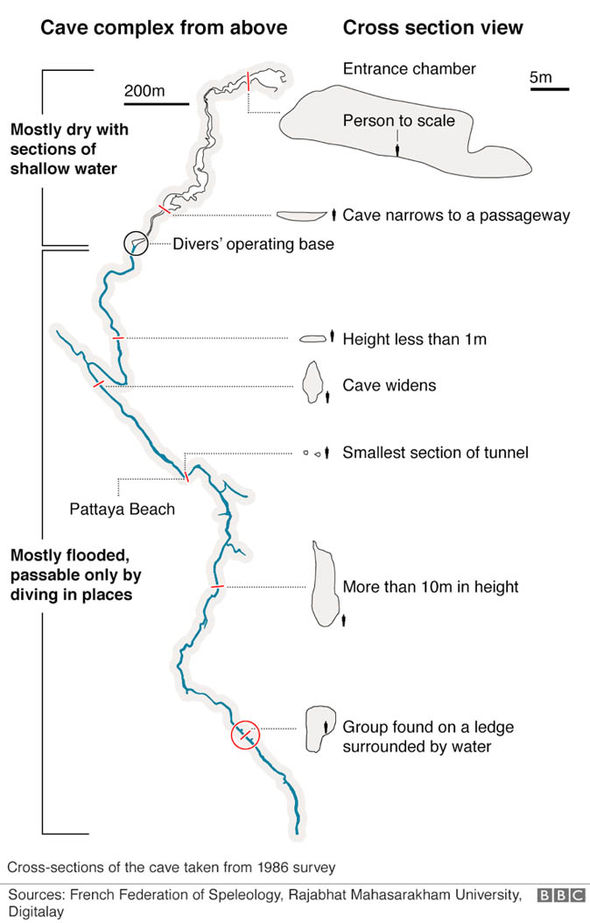Elon Musk Is Sending A Team of Engineers To Help Rescue Trapped Thai Boys
The Wild Boars are trapped. The 12 boys on the soccer team, along with their coach, have been trapped inside a flooded cave since June 23, 4 km (2.5 miles) into the Tham Luang cave complex in northern Thailand. The good news? They’re safe. The bad news? There’s no obvious way for them to escape, except to wait out the monsoon season, which can take months. That is, if the water doesn’t rise too high in the meantime.
You’d think they could just teach the boys to dive so they could get out, right? Well, it’s not so simple. Diving that distance takes many hours each way, and is incredibly dangerous. Some passages are as narrow as 70 cm (27.5 inches), and flooded sections are as deep as 30 meters (98 feet). It’s so dangerous, in fact, that an ex Navy SEAL diver
died from a lack of oxygen on the way to help the boys early Friday morning.
Then, Elon Musk — tunnel digger and space explorer extraordinaire — entered the fray. In a series of tweets, Elon Musk revealed his plans to send a team of SpaceX and Boring Company engineers to swoop in for the rescue.
Just what Elon’s team would do there was not immediately apparent. He
first wrote: “Boring Co has advanced ground penetrating radar & is pretty good at digging holes.” Maybe he planned for his team to dig the boys out? But drilling down through 800 meters (0.5 miles) of rock could take time and easily expose the boys to further dangers, like the possibility of cave-ins and falling rocks.
Another solution would be to pump out all of the water flooding the cave. That’s the one the Thai government is going with right now. But the issue there is that it takes an immense amount of energy and time — right now, the Thai government is pumping at a rate of
180,000 liters an hour. Best case scenario, it’ll take them four months to reach the boys. And a heavy downpour, as is common in monsoon season, could set them back dramatically.
After batting around a few ideas on Twitter, Elon comes to another solution: let them slide right out. Materials needed: a gigantic inflatable nylon tube, 1 meter (39 inches) in diameter, and over 2 km long. Inflating the tube “like a bouncy castle” would effectively create a tunnel; the water would be pushed to the sides, creating an opening for the boys to escape.
Any rescue would not be simple, Elon admits. But this solution sounds particularly zany— and clever, especially since it could make the cave’s narrow openings navigable.
But we — and, surely, others with much more intimate knowledge of physics — have questions about how it would actually work. For example: how could the engineers make sure the tube is intact for the entire length of the cave? If the material is too fragile it may rip, trapping the boys inside it.
And then there is the difference in air pressure at either end of the tube — the same reason divers get “the bends” on the way back to the surface. The kids would have to be outfitted with breathing apparatus, which would make the passage even more
anxiety inducing.
